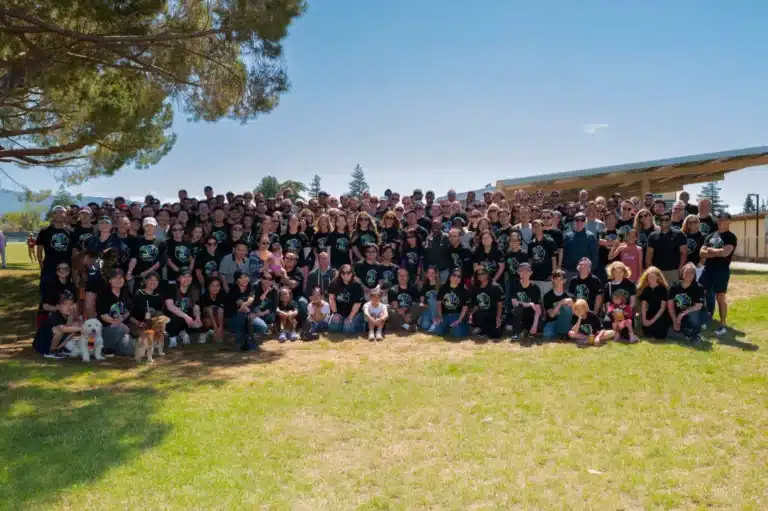The Super Bowl isn’t just about a big NFL game or falling in love again with Cool Ranch Doritos. It’s a global event consistently delivering over 110 million viewers. Companies running ads have an opportunity for instant brand awareness. From Apple’s Orwellian Dystopia of “1984,” to E*Trade’s “Talking Babies,” to Budweiser’s “Wassup?”, companies capture millions of eyes at once. Since the internet, and especially in the era of smart phones, companies can instantly monetize web, mobile, and other digital apps. Since Conviva helps the biggest digital businesses on their biggest days with Experience-Centric Observability, here’s some color commentary just in time for game day.
The heat is on when streaming high-stakes, live events like the Super Bowl. Supporting the streaming of large-scale events puts major pressure on teams across the company – from mobile app and web teams to SREs and the NOC (Network Operations Center), to video playback teams. It’s like inviting 22 million people over to your house to watch the game, six million of whom may want to crowd in front of your TV at any given moment. As the host, you’re responsible for ensuring they have the best possible time. But you have no idea what they consider a good time – Do they expect only a comfortable chair to sit on and complete silence to watch the game? Or do they expect great food, a rowdy game day environment, and free drinks? How do you ensure everyone has an enjoyable experience?
Supporting Millions of Concurrent Viewers Requires Advanced Preparation
Typically, product, engineering, and operations teams prepare for big events by focusing on resiliency. Load and functional testing, capacity planning, failover testing, and the inevitable code freeze aimed to ensure sites and apps are up and available on game day.
However, while resiliency is an essential component, just because your site is up doesn’t mean users are happy. Quality of Experience (QoE), or how well applications meet user expectations, is a key ingredient in your winning seven-layer dip here.
Here are the top three ways technical teams prepare for Super Bowl-like events:
1. Sign-ups will be stressed
Millions of users see Super Bowl ads then reach for their phones to sign-up to a service where they can watch the Big Game, but unknown to them is that a typical sign-up process involves dozens of micro-services: authentication and authorization, payment processing , email, encryption, localization, user management, permission management, and API gateways, just to name a few. This complexity is multiplied by a sea of devices, operating systems, browser versions, and networks. There are millions of potential fail points that can break a sign-up process.
Here is a glaring stat. Stripe, the financial payments company, found that 52% of users will abandon a sign up or check out process that takes longer than two minutes to complete. Successfully completing this process within two minutes is an example of an experience metric representing a key business outcome. Compare that to Frontend Observability measurements like Largest Contentful Paint (or how quickly users see large content) or First Input Delay (how long after an end user input does the page respond). These measurements are not linked in any meaningful way to how a user is interacting with your application and are a poor proxy for understanding customer experience.
2. Optimize your Log-in Experience
Users watching their favorite apps on TV want to log in and get to video as quickly as possible. Authentication captures user-provided credentials (username/email, password), compares those with stored data in a database, verifies the account status, creates a session token or cookie to maintain user identity, and grants access to features.
Here’s another stat: 86.8% of users will not return to the same device or platform for seven days after a failed log in/authentication, based on Conviva data. To meaningfully understand your log in experience, especially during massive live events like the Super Bowl, it’s critical to extract deeper meaning than what errors, crashes, or API performance data gives you. Monitor and manage quality of experience metrics, like “Time to Log in,” and “Percent Successful Login,” to give you a holistic view of a user’s digital experience that maps directly to desired business outcomes.
3. Double-down on Reliable Video Playback
Content is important, but QoE (Quality of Experience) has far more influence on whether a viewer will be happy with what they are watching. Customer research data supports this point, with two of the top three cited reasons why viewers return to a streaming service having to do with QoE vs content selection.
To ensure a great QoE for media on your site or app, focus on four core components: Digital Rights Management (DRM), Connection Induced Rebuffering Ration (CIRR), video playback, and video start failures. For DRM, stress testing and continuous monitoring helps. Adaptive bitrate streaming helps mitigate CIRR by dynamically adjusting video based on bandwidth. Rigorous testing across various devices and network conditions proactively identifies and eliminates potential bottlenecks, minimizing video start failures and playback interruptions.
Quality of Experience is Your Super Bowl Ticket
For the upcoming big game, make sure you’re prepared. The status quo of delivering features that are up and available isn’t going to make your customers happy. It’s important to take an Experience-Centric view of Observability, AI (Artificial Intelligence), and your telemetry data. Getting your internal teams prepared to execute on your biggest day can ensure the crowd goes wild.
Ready for Experience-Centric Observability focused on delivering business outcomes? Sign up for a demo or talk to an expert today.





